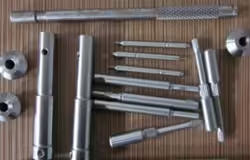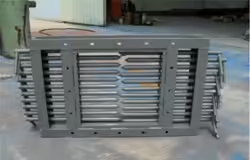
Top 8 4140 Steel Equivalent Picks Revealed
Table of Contents
Introduction
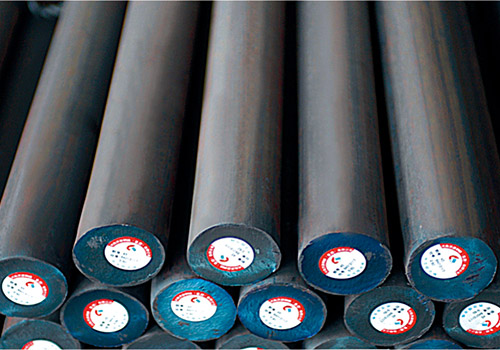
In the world of industrial materials and manufacturing, few alloys stand out as distinctly as 4140 steel. Known for its excellent balance of strength, toughness, and wear resistance, this chromium-molybdenum alloy steel is used extensively across industries like automotive, oil and gas, tool and die, construction, and heavy machinery. However, global sourcing needs, regulatory compliance, and availability issues often necessitate finding a suitable 4140 steel equivalent.
Knowing what alternatives exist can be crucial when you’re sourcing materials internationally or seeking substitutions that maintain performance. This blog explores the top 8 4140 steel equivalent materials used across various standards and regions, helping engineers, buyers, and manufacturers make informed decisions.
What Is 4140 Steel?
Before diving into global equivalents, it’s important to understand why 4140 steel is such a highly regarded and widely used alloy. Classified under ASTM A29/A29M and SAE J404 standards in the United States, 4140 steel is a low-alloy steel that includes chromium, molybdenum, and manganese in its composition. These elements contribute to a robust balance of mechanical characteristics that make the alloy particularly valuable in demanding applications.
Key performance traits of 4140 steel include:
- High fatigue strength: Ideal for cyclic load-bearing components such as crankshafts and gear sets.
- Good toughness and ductility: Allows for deformation without catastrophic failure under high-stress conditions.
- Excellent wear resistance: Suitable for applications exposed to friction, impact, or abrasive environments.
- Moderate corrosion resistance: While not as resistant as stainless steel, 4140 still offers improved resistance over carbon steels.
- Good machinability in annealed state: Simplifies the manufacturing process without sacrificing quality.
Because of these attributes, 4140 steel is often found in high-stress and high-impact parts, including shafts, axles, spindles, bolts, couplings, gears, and dies. Its versatility, combined with excellent hardenability and strength retention, has made it a standard in heavy-duty industrial applications.
Factoring in Global Needs: Why Look for 4140 Steel Equivalent?
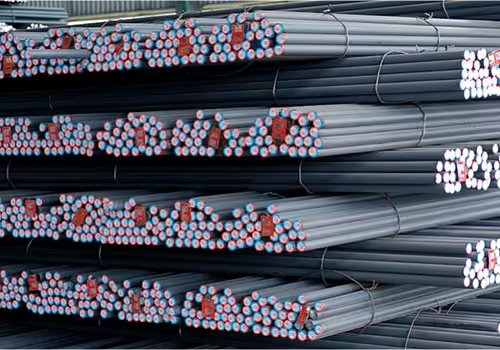
Although 4140 steel remains a premier choice for critical components, there are numerous practical reasons why manufacturers and designers might need to seek an equivalent grade. Let’s explore the key motivations behind this need:
1. Global Sourcing and Standardization
Different countries operate under various steel classification systems. For example, while 4140 is a common designation in the U.S., European, Japanese, and other markets use different nomenclatures like 42CrMo4 (EN), SCM440 (JIS), and 41CrMo4 (DIN). If you’re managing an international project or purchasing materials across borders, finding a 4140 steel equivalent helps standardize material use and streamline supply chain logistics.
2. Regional Availability and Market Constraints
In some regions, the exact 4140 specification may not be readily stocked or may be available only through expensive custom orders. Substituting with a local equivalent that meets the same mechanical and chemical standards can help reduce lead times and procurement costs.
3. Cost Optimization Without Compromising Quality
Budget constraints often drive the need to evaluate alternatives. Some equivalents might offer a similar performance profile at a more favorable price point due to local production or availability. For instance, using a regional variant like 42CrMo4 might help meet tight cost targets while delivering the necessary mechanical properties.
4. Application-Specific Performance Needs
Not all applications require the full strength or heat treatment potential of 4140 steel. In some cases, a slightly softer or more machinable alternative—such as AISI 4130—may be more suitable for the task at hand. Engineers often evaluate the operational environment and load demands before selecting the most efficient and cost-effective substitute.
In any of these scenarios, understanding the similarities and differences among potential 4140 steel equivalent materials can save both time and money while ensuring your final product meets performance expectations.
Top 8 4140 Steel Equivalent Picks Revealed
Below is a comprehensive table comparing eight of the most widely accepted equivalents to 4140 steel based on regional standards and compositions:
| Equivalent Name | Country/Standard | Common Code | Composition Similarity | Application Notes |
|---|---|---|---|---|
| 42CrMo4 | DIN/EN (Europe) | EN 1.7225 | Very High | Widely used in European automotive parts |
| SCM440 | JIS (Japan) | JIS G4105 | High | Preferred in Japanese tool-making |
| 41CrMo4 | DIN (Germany) | EN 1.7225 | Very High | Used in high-load machine components |
| 4140H | ASTM/SAE (USA) | AISI 4140H | Exact | Higher hardenability than standard 4140 |
| G41400 | UNS | G41400 | Exact | General engineering and mechanical parts |
| 25CrMo4 | EN (Europe) | EN 1.7218 | Medium | Good for lightweight high-stress parts |
| AISI 4130 | ASTM/SAE (USA) | AISI 4130 | Moderate | Better weldability, lower strength |
| B7 Alloy Steel | ASTM | AISI 4140 B7 | High | Ideal for high-temperature fasteners |
Each of these steels shares similar mechanical properties and chemical compositions, making them practical substitutes depending on regional availability and specific application needs.
Choosing the Right 4140 Steel Equivalent for Your Project
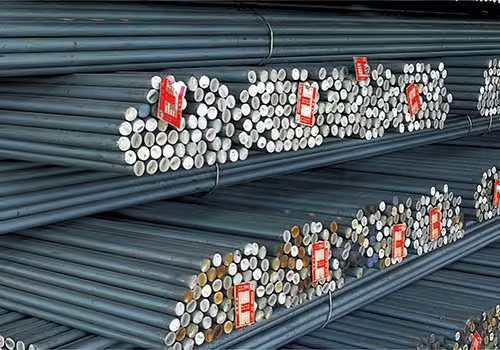
Selecting the appropriate 4140 steel equivalent for your specific application involves a careful evaluation of several key factors beyond just matching chemical composition. Each substitute material comes with its own set of characteristics and processing behaviors that can significantly influence the performance and manufacturability of the final component. Understanding these nuances ensures you choose an alternative that not only meets but ideally exceeds your project requirements.
- Mechanical Properties: A thorough comparison of mechanical properties such as tensile strength, yield strength, elongation percentage, and impact toughness is fundamental when considering any 4140 steel equivalent. These parameters determine how the material will behave under load, its ability to absorb energy without fracturing, and its deformation characteristics. For critical parts subjected to dynamic stresses or cyclic loads, selecting an equivalent with matching or superior mechanical properties is essential to ensure safety and durability.
- Heat Treatment Behavior: Different 4140 steel equivalent grades may respond uniquely to heat treatment processes like quenching and tempering. The alloying elements present in each material influence hardenability, grain structure, and residual stress development. For instance, while some equivalents can achieve comparable hardness and toughness after heat treatment, others might require adjusted temperature profiles or cooling rates to avoid brittleness or distortion. Understanding these subtleties helps maintain consistency in the manufacturing process and final component quality.
- Weldability and Machinability: Another important consideration when choosing a 4140 steel equivalent is its weldability and ease of machining. Some alloys, such as AISI 4130, are well-known for their excellent weldability and are preferred in applications where joining operations are frequent or complex. Conversely, other equivalents might demand specialized welding techniques or pre- and post-weld heat treatments to prevent cracking. Machinability also varies across equivalents; selecting a material that balances strength with ease of fabrication can optimize production efficiency and reduce costs.
- Standard Compliance: Ensuring that the 4140 steel equivalent complies with relevant regional standards, certifications, and project specifications is critical. Whether it’s ASTM, DIN, JIS, or EN standards, adherence to these guidelines guarantees traceability, material quality, and regulatory approval. Before finalizing a substitute, verify documentation such as mill test reports (MTRs), certificates of compliance, and heat treatment records to ensure conformity.
- Real-World Application Example:Consider an aerospace component manufactured in Japan. The locally prevalent 4140 steel equivalent, SCM440, is often selected due to its availability and certification under JIS standards. SCM440 closely matches the mechanical and chemical properties of the original 4140 steel, making it a reliable alternative. However, detailed knowledge of SCM440’s heat treatment response and weldability characteristics is essential to adapt processing parameters accordingly.
In summary, the selection process for a 4140 steel equivalent should be a comprehensive evaluation that balances chemical composition, mechanical behavior, fabrication methods, and certification requirements. This ensures that the substitute material delivers performance and reliability equivalent to or better than the original 4140 steel, ultimately safeguarding the integrity of your project.
Conclusion
Understanding the best 4140 steel equivalent options can improve sourcing flexibility, lower costs, and ensure product integrity. While these materials vary slightly in composition and regional designation, they can often be interchanged with little to no effect on performance if selected correctly.
In critical applications, it’s always advisable to consult with a metallurgist or materials engineer to verify substitution safety. Knowing your equivalents isn’t just about availability—it’s about maintaining high standards without compromise.
And in some specific high-performance applications, you may find yourself coming full circle, concluding that despite the impressive alternatives, 4140 itself remains the optimal solution.
FAQ
Q1: Is 42CrMo4 the same as 4140 steel?
While not identical, 42CrMo4 is considered the closest European equivalent to 4140, offering very similar mechanical properties and usage scenarios.
Q2: Can I use SCM440 instead of 4140?
Yes, especially in Asian manufacturing environments, SCM440 serves as a solid substitute. It shares a similar composition and is used in high-strength applications.
Q3: What’s the difference between AISI 4130 and 4140?
4130 has lower carbon content than 4140, making it more weldable but slightly less strong. It’s suitable for lighter structural applications.
Q4: Do I need to change heat treatment procedures when switching equivalents?
In some cases, yes. Always consult material data sheets and engineering teams to ensure thermal processes are adjusted accordingly.
Q5: Is 4140 still better than its equivalents?
In many scenarios, yes. While equivalents offer flexibility, the original 4140 grade continues to be a trusted, high-performance standard, especially in critical applications.





